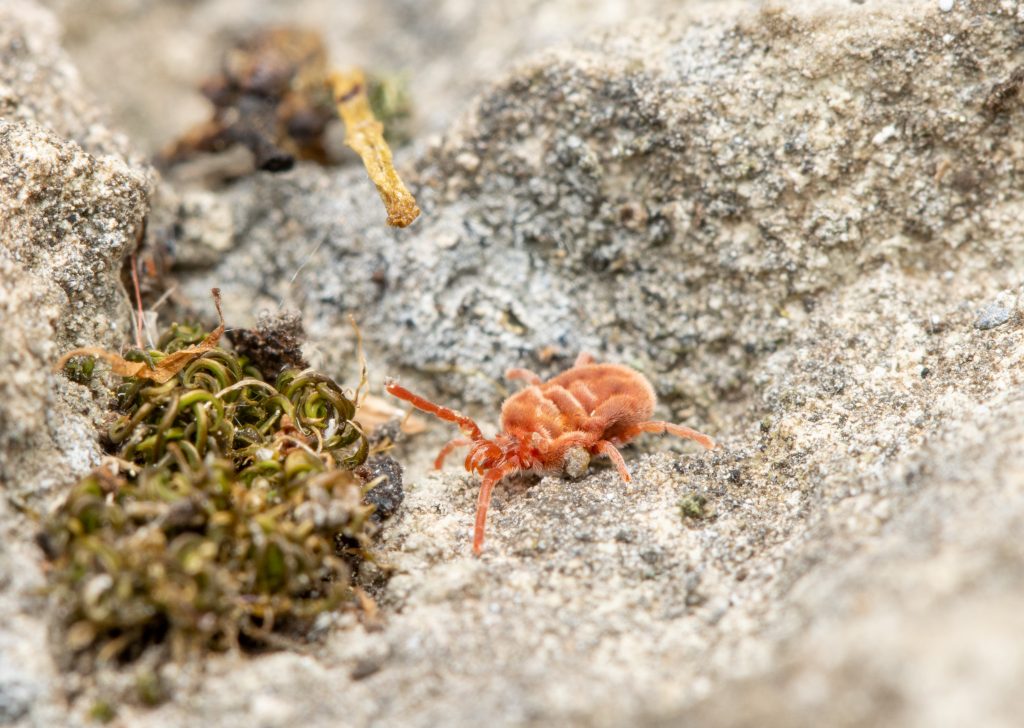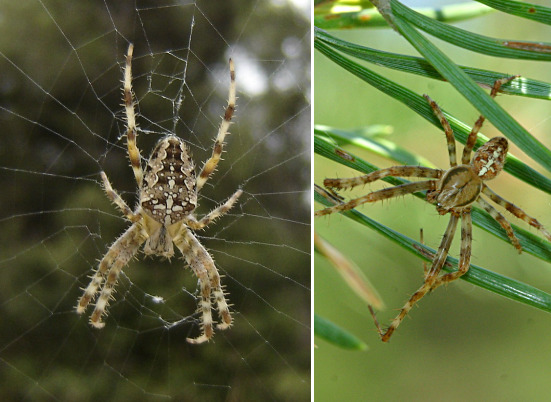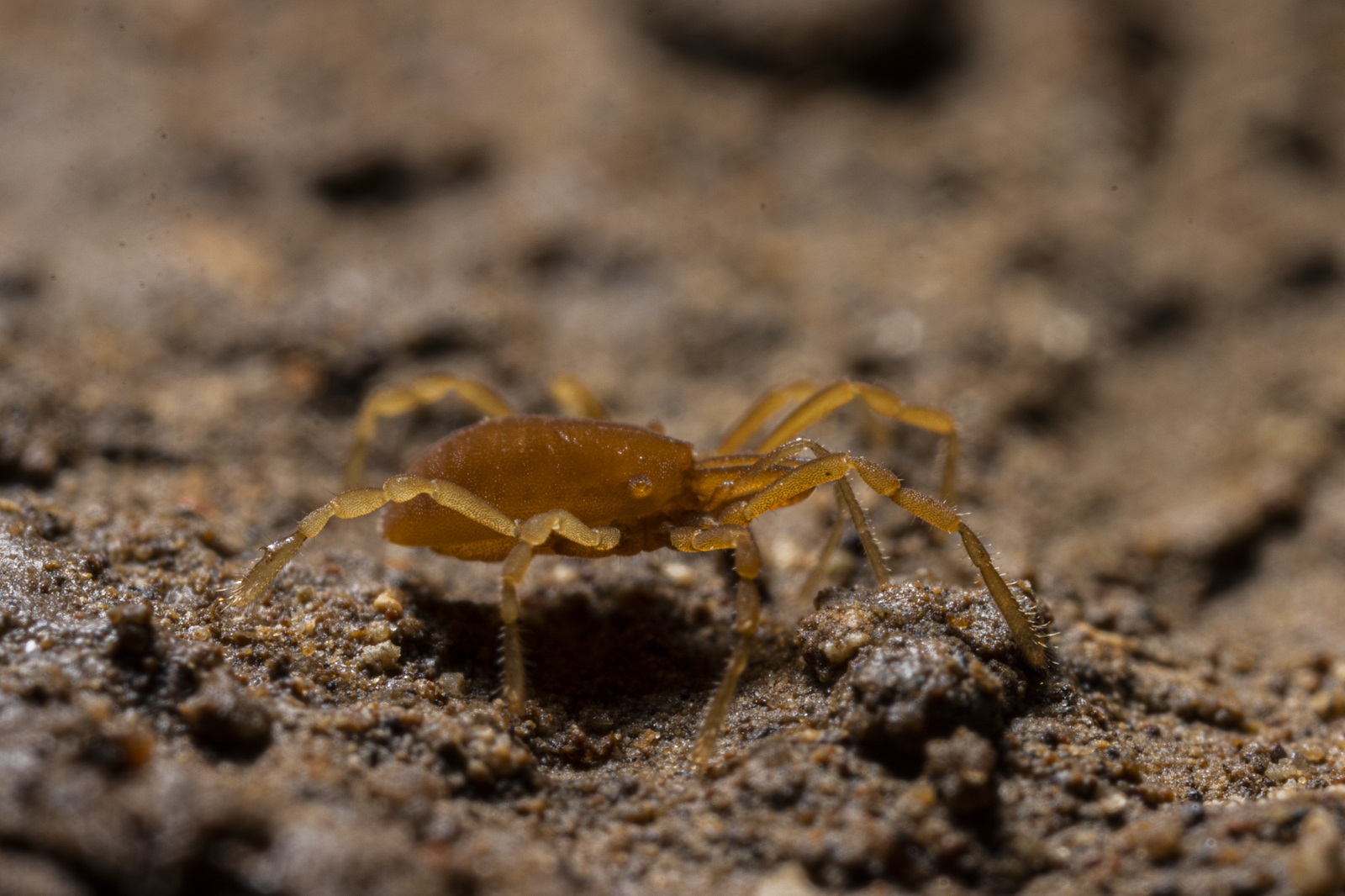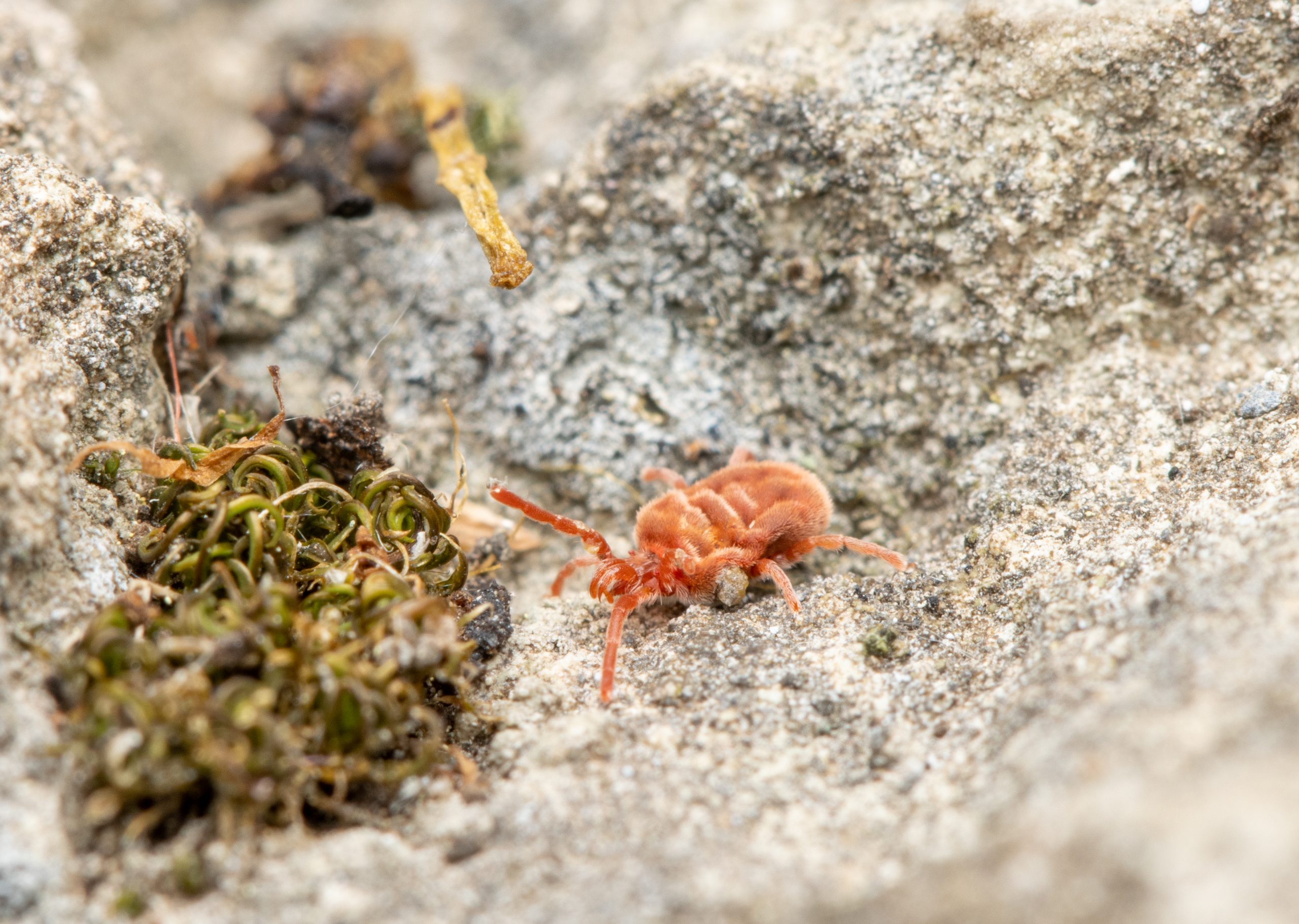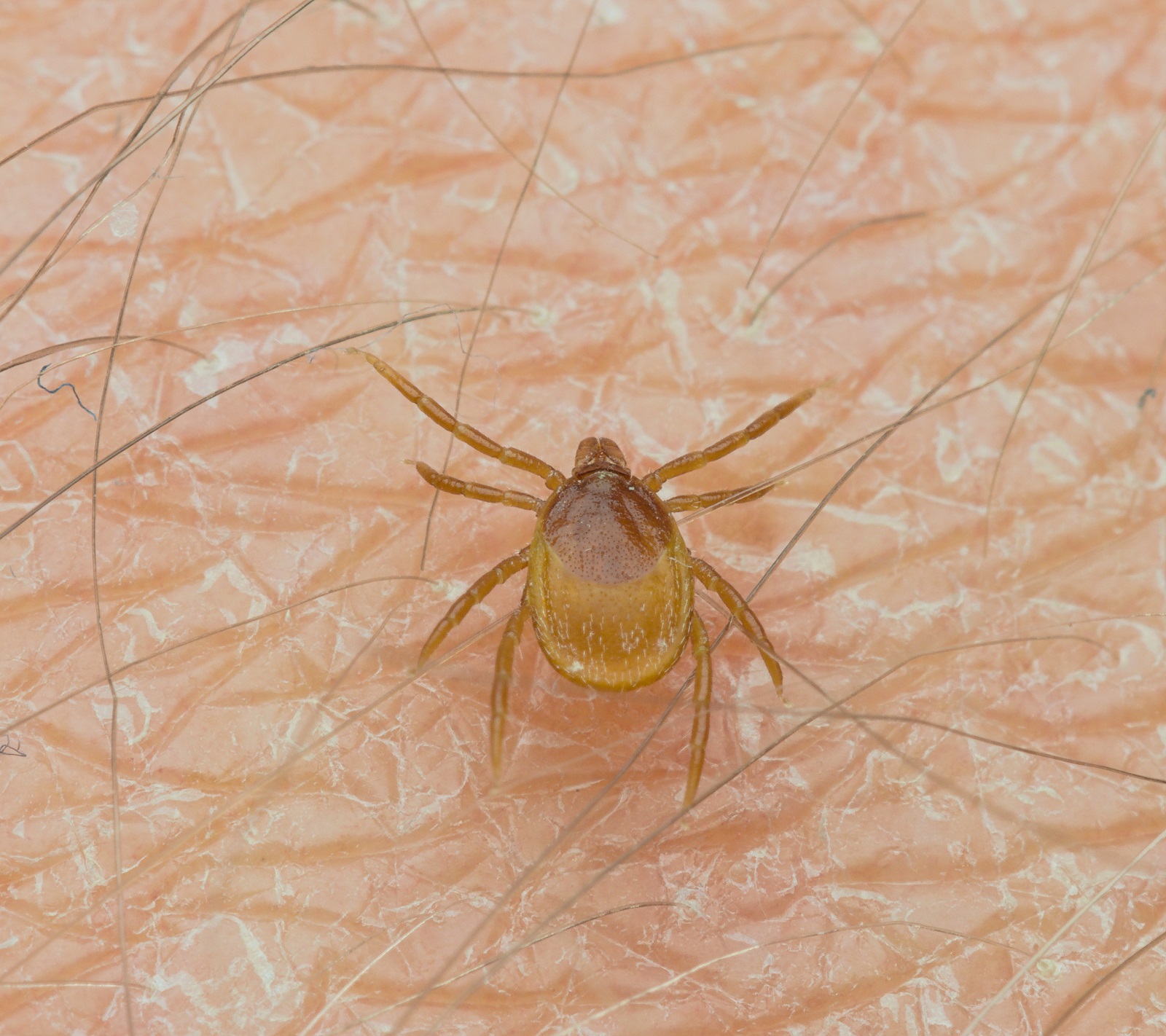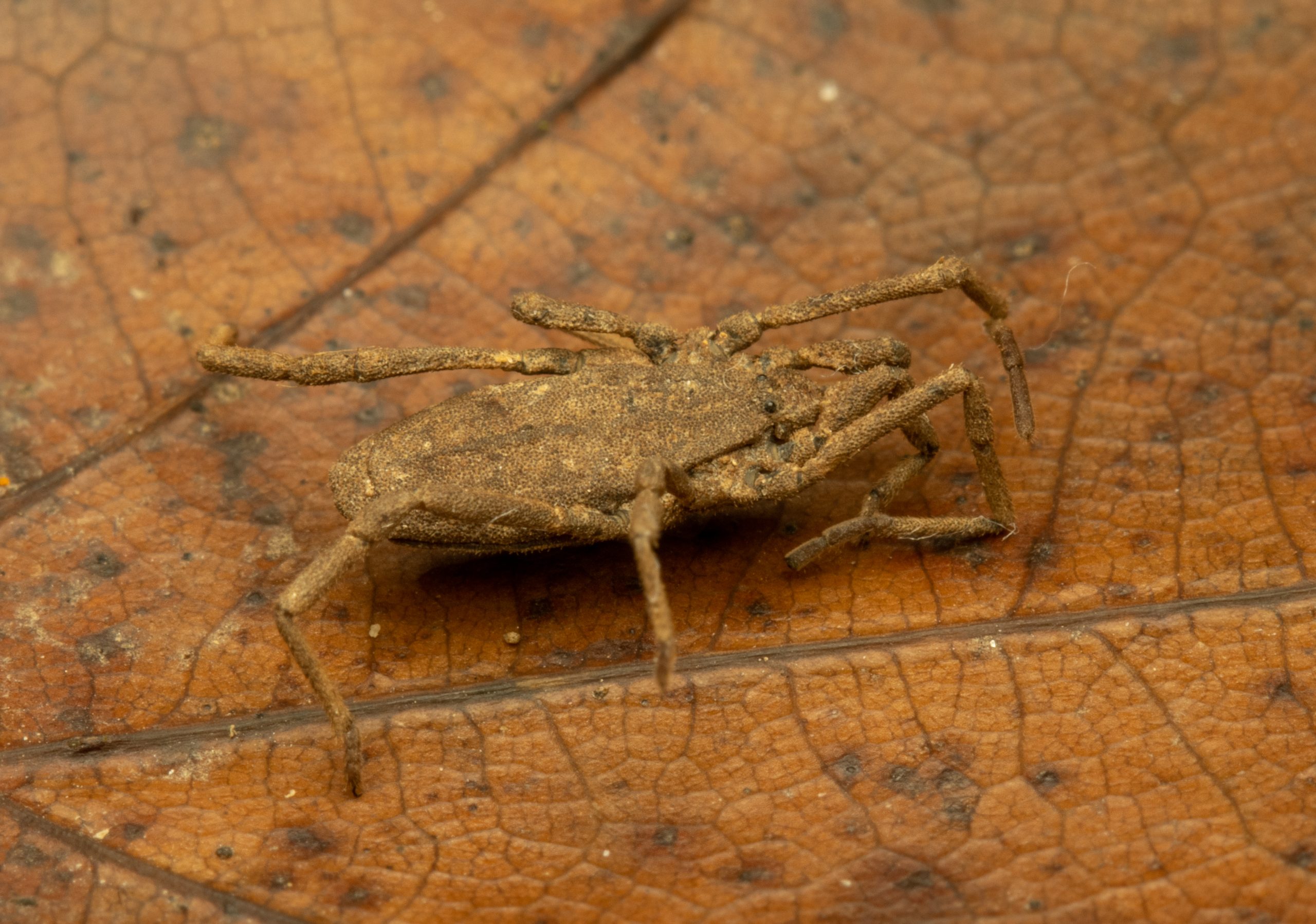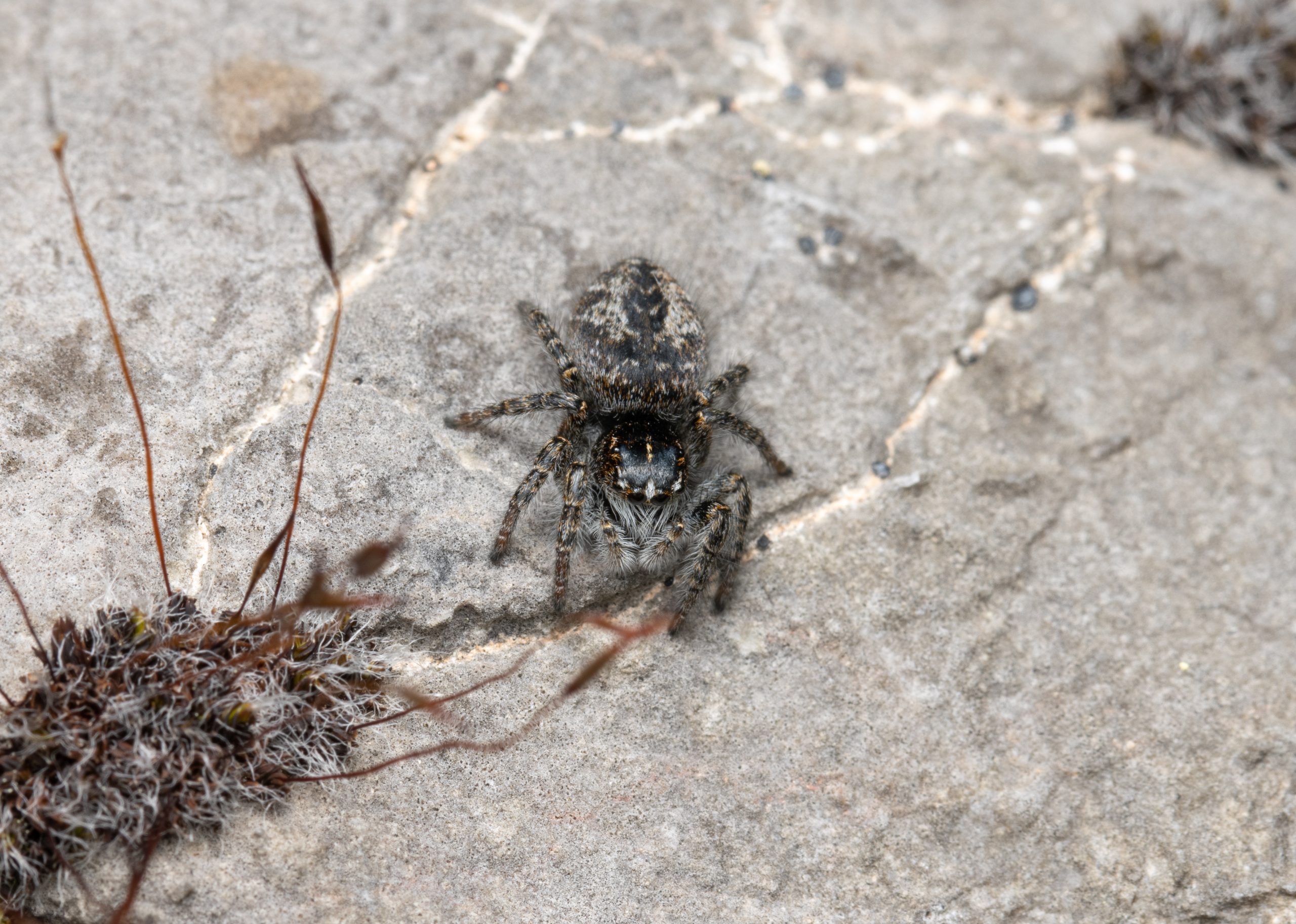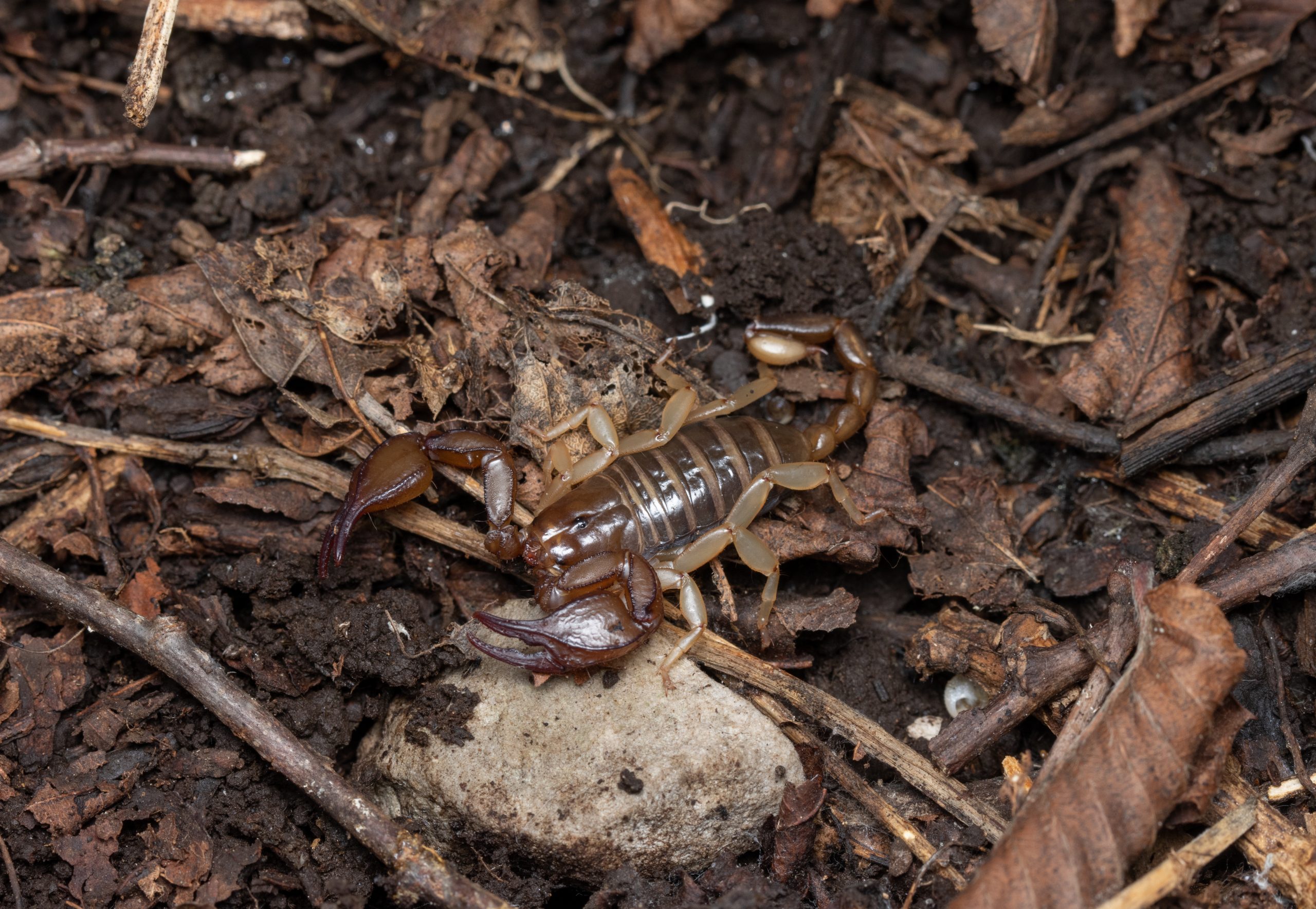- Chelicerata
Trombidiidae
Red velvet mites are tiny, a few millimeters large mites (Acariformes). They are characteristically red colored and have soft bodies covered in fine hairs, giving them a velvety appearance. The body of a red velvet mite is divided into gnathosoma and idiosoma, with the latter being considerably larger than the gnathosoma.
On the gnathosoma chelicerae, pedipalps and small stalked eyes are located. The chelicerae are chelate and are used in feeding. The pedipalps function as tactile organs.
The segments of idiosoma are fused into an unsegmented unit carrying four pairs of walking legs.
The red velvet mites live in the plant litter. The adult animals are free living predators, while the larvae are parasites of insects and other arachnids. At least some species locate their prey by sound.
During mating, the male and female perform a courtship “dance”, during which, they tap each other with the first pair of legs in some species, and the male deposits a packet of sperm (spermatofore) which is picked up by the female. After fertilization the females lays from 60 to 100.000 eggs into the ground.
The lifecycle includes an egg, pre-larva, larva, proto-, deuto- and tritonymph, and finally an adult. Numerous species have been erroneously described on the basis of developmental stages of already described species.
More photos
Related arthropods

Authors
- Urban Bogataj,
- Gregor Bračko,
- Teo Delič,
- Cene Fišer,
- Žiga Fišer,
- Rok Kostanjšek,
- Rudi Verovnik,
- Miloš Vittori,
- Valerija Zakšek.
Students Vito Ham, Vesna Jurjevič, Gaj Kušar, and Adrijan Samuel Stell Pičman also participated in the project.
